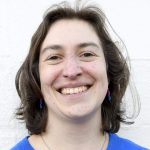Weeks of digging in the mud have paid off for a team of Salem archaeologists — and they’re eager to share their work this weekend at a hands-on event.
A square pit at the back of the Willamette Heritage Center’s campus boasts the team’s largest find to date: a pile of mortared stone, first detected using radar and subsequently unearthed.
Kimberli Fitzgerald, the city of Salem’s historic preservation officer, said it’s likely a piece of the foundation for the administration building and parsonage that once housed teachers for the adjacent Oregon Indian Mission Manual Labor School.
The discovery has clarified conflicting maps from the mid-1800s, some of which showed the building running parallel to the mill building on the heritage center campus. Instead, the foundation piece shows the building sitting at an angle.
Fitzgerald is hopeful the current dig, scheduled to run through the end of April, will uncover more pieces of foundation, providing confirmation of the building’s location.
Next spring, the team may return to the heritage center site, or begin searching for the foundation of the school itself, which is believed to be on the Willamette University campus across the street.
“We’re really wanting to have a full understanding of what Willamette Valley was like before (Oregon) became a state,” she said.
To showcase the project, the heritage center is hosting Public Archaeology Day Saturday from 10 a.m.-2 p.m. at the site, located at 1313 Mill St. S.E. The event is free.
The event will give visitors a chance to learn about archaeological methods and tools, sifting through dirt to uncover their own artifacts and looking at finds from both the current site and other parts of Salem.
Archeologists will continue their work during the event, allowing visitors to ask questions and learn about the effort to better understand Salem’s past.
Willamette University, the City of Salem, the Confederated Tribes of Grand Ronde and the Oregon Archaeological Society are also participating.

It’s the second year archaeologists have worked on the dig and invited the public to visit.
The excavation is part of a larger effort to document the early period of colonization in Salem and the operation of the mission school, where missionaries taught Indigenous children from a variety of Northwest nations European methods of agriculture, English and religion in an effort to replace Indigenous customs and culture. The school operated for just a few years, and there’s little record of the day-to-day lives of students there.
Through a state grant, the city is gathering data from multiple sites from the period and preparing to list them on the National Register of Historic Places, Fitzgerald said.
Kylie Pine, the heritage center’s curator, hopes the work will give a more complete story about a period where many cultures mingled in Salem. Prior to Methodist missionary arrival in Salem in the 1830s, she said retired French-Canadian fur trappers had made homes in the region, often marrying Indigenous women and raising multicultural families at Mission Bottom.
Their stories are often left out of discussions of Salem’s history.
“You have this melting pot of cultures living just north of Salem,” she said. “It’s not missionaries coming to this wilderness and establishing this home base.”
Pine said she’s excited for a chance to show Salemites how historians, archaeologists and others who study the past deepen their knowledge.
“The representations of the way we do history sometimes don’t do justice,” Pine said. It’s common for TV shows and movies to show climactic discoveries in a few days of digging, but in reality, most knowledge comes not just from digging up artifacts, but from putting them in context based on what’s around them and what else is known about the site based on maps and other records.
“It’s hard to get a 10,000 foot view when we’re down in the hole,” she said. “I don’t have a whole lot of answers yet, just a lot of questions.”
Previous coverage:
Now underway, mission school excavation yielding more questions
Salem archeologists and historians plan to use radar to discover site of 1840s mission school
Contact reporter Rachel Alexander: [email protected] or 503-575-1241.
JUST THE FACTS, FOR SALEM – We report on your community with care and depth, fairness and accuracy. Get local news that matters to you. Subscribe to Salem Reporter. Click I want to subscribe!

Rachel Alexander is Salem Reporter’s managing editor. She joined Salem Reporter when it was founded in 2018 and covers city news, education, nonprofits and a little bit of everything else. She’s been a journalist in Oregon and Washington for a decade. Outside of work, she’s a skater and board member with Salem’s Cherry City Roller Derby and can often be found with her nose buried in a book.










